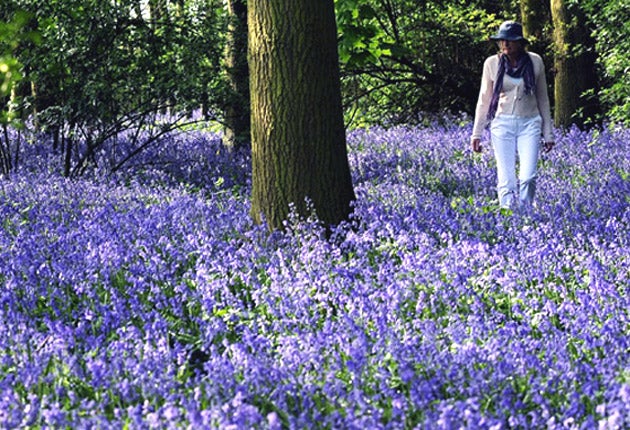Met Office comes to the rescue as hayfever sufferers wilt in heat

Your support helps us to tell the story
From reproductive rights to climate change to Big Tech, The Independent is on the ground when the story is developing. Whether it's investigating the financials of Elon Musk's pro-Trump PAC or producing our latest documentary, 'The A Word', which shines a light on the American women fighting for reproductive rights, we know how important it is to parse out the facts from the messaging.
At such a critical moment in US history, we need reporters on the ground. Your donation allows us to keep sending journalists to speak to both sides of the story.
The Independent is trusted by Americans across the entire political spectrum. And unlike many other quality news outlets, we choose not to lock Americans out of our reporting and analysis with paywalls. We believe quality journalism should be available to everyone, paid for by those who can afford it.
Your support makes all the difference.Britain's millions of hayfever sufferers have a new helping hand: the Met Office has introduced daily pollen forecasts on its website.
Click here to upload graphic: The Pollen Calendar (156k)
The updates arrived just as the pollen season gets properly under way, with tree pollen reaching a peak about now, to be followed by grass pollen in midsummer and pollen from smaller flowering plants after that.
Over the past week, the unusually hot weather experienced across much of the country – it looks like being the warmest April on record – has meant many people who are pollen-sensitive have had an early experience of hay fever's running noses and streaming eyes.
Some have such strong allergic reactions that they are confined to their homes, and it is thought that four million working days are lost to hay fever every year, with between 15 and 20 per cent of the population affected.
The new service, which covers the whole of the UK, represents a step change in the resources available to sufferers. At present, it is updated at noon every day, but it is hoped that the update can be made earlier in the day to give sufferers more time to plan their days.
It gives pollen forecasts for each of the Met Office's 16 regions, which are available as two-day, three-day and five-day forecasts, updated daily, and a monthly forecast, updated every week.
Yesterday's forecast, for example, showed a medium risk over Southern England, a low risk over the Midlands and the North, a medium risk again over the Scottish Highlands, and a high risk over Argyllshire. There is also a "very high risk" category.
The Met Office is taking over and enhancing a facility which was formerly provided by Pollen UK, a part of the National Pollen and Aerobiology Research Unit at the University of Worcester.
Its new forecast combines weather data with pollen monitoring from across the country, and is being run by a full-time UK Pollen Network manager, Yolanda Clewlow.
"Variable weather conditions across the country mean that levels of pollen often vary greatly from day to day, so it's important the hay fever sufferers stay up to date with the latest forecast," Ms Clewlow said. "You may need to take medication in advance of high-count days."
Published on the website in line with the forecasts is an inventive and fascinating pollen calendar, reproduced above, which illustrates how different types of pollen which can generate hay fever and other allergies are released throughout the year.
The pollen season is normally March to August, though it can start as early as January and end as late as November, and separates into three main sections: tree pollen from late March to mid-May, grass pollen from mid-May to July, and weed pollen from the end of June to September.
Specifically, the pollen calendar shows that the alder is the first tree to shed its pollen, beginning in January, followed by hazels and yews, with elms and willows following in February. Other trees follow in March, and by April, tree pollen is at its height. Grasses begin in May and go through to September.
The most significant tree pollen is from the birch (shed from March to June), to which 20 per cent of sufferers are allergic, Ms Clewlow said. But 95 per cent of sufferers are allergic to grass pollen.
In the series of warm summers that lasted until 2007, there was a steadily rising incidence of hay fever among Britons, which experts blamed on climate change. Pollen seasons were seen to be lengthening, and the pollen itself was provoking a more powerful reaction.
Recent summers have been wetter and cooler, but that may be about to change: the current month is in line to beat April 2007 as the hottest April in the Central England Temperature record, which goes back to 1659.
Join our commenting forum
Join thought-provoking conversations, follow other Independent readers and see their replies
Comments